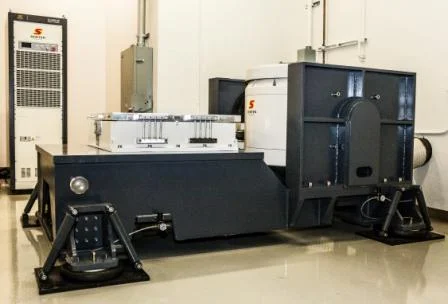This article is to list best practices and common mistakes during the operation of an electrodynamic shaker; however, it is not inclusive of all possible situations.
Good Habits/Best Practices
Read and understand the Operator’s manual and operation of the shaker.
Ensure that the axis of control sensor corresponds to the axis of excitation.
Do not adjust the GAIN knob during the execution of a test or when in Check only mode.
Always enable pre-test in the vibration control software. Pre-tests help estimate the response function, drive voltage required for the test and check if a closed control loop has been established.
Make sure that the DUT is securely fastened.
Make sure that all hardware is fastened appropriately.
Prior to running Random Tests, check the RMS limits page in the vibration controller software. If Expected/Shaker limits column depicts acceleration and force to be beyond 60%, contact Sentek Dynamics.
If controlling from the DUT is desired, control from the armature or slip table first, depending on orientation of excitation, and use a monitor channel to characterize the intended control location to ensure that the location is suitable.
Avoid running sensor cables close to facility power cables.
Avoid long runs of sensor and/or drive cables.
Avoid usage of BNC couplers to extend cables, if possible.
Common Problems and their Solutions
| Problem | Cause/Solution |
|---|---|
| Amplifier main breaker trips immediately when flipped ON | The emergency stop on the shaker is engaged. Twist the emergency stop button to the right to disengage. |
| Amplifier main breaker trips shortly after the breaker is flipped ON | The emergency stop on the amplifier is engaged. Twist the emergency stop button to the right to disengage. |
| OPEN LOOP error |
|
| Amplifier error “FAILED OTHERS” |
|
| Amplifier error “COOLING (?)” | Cooling unit is not powered or has an alarm. |


